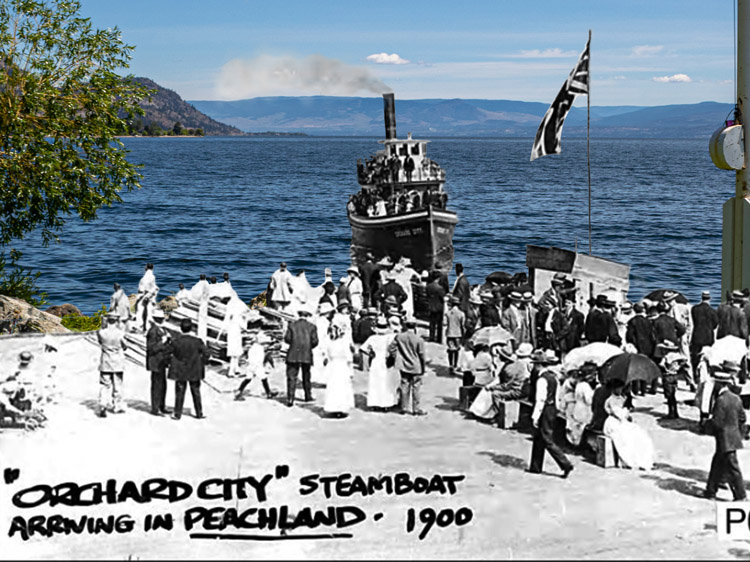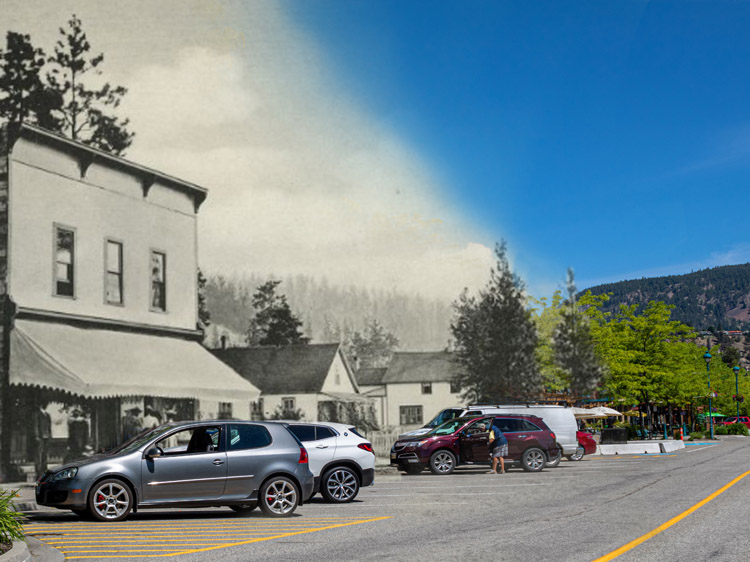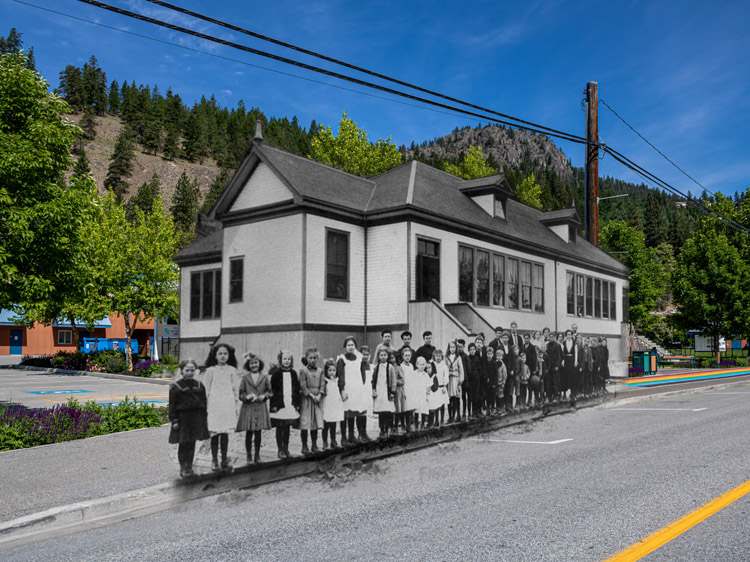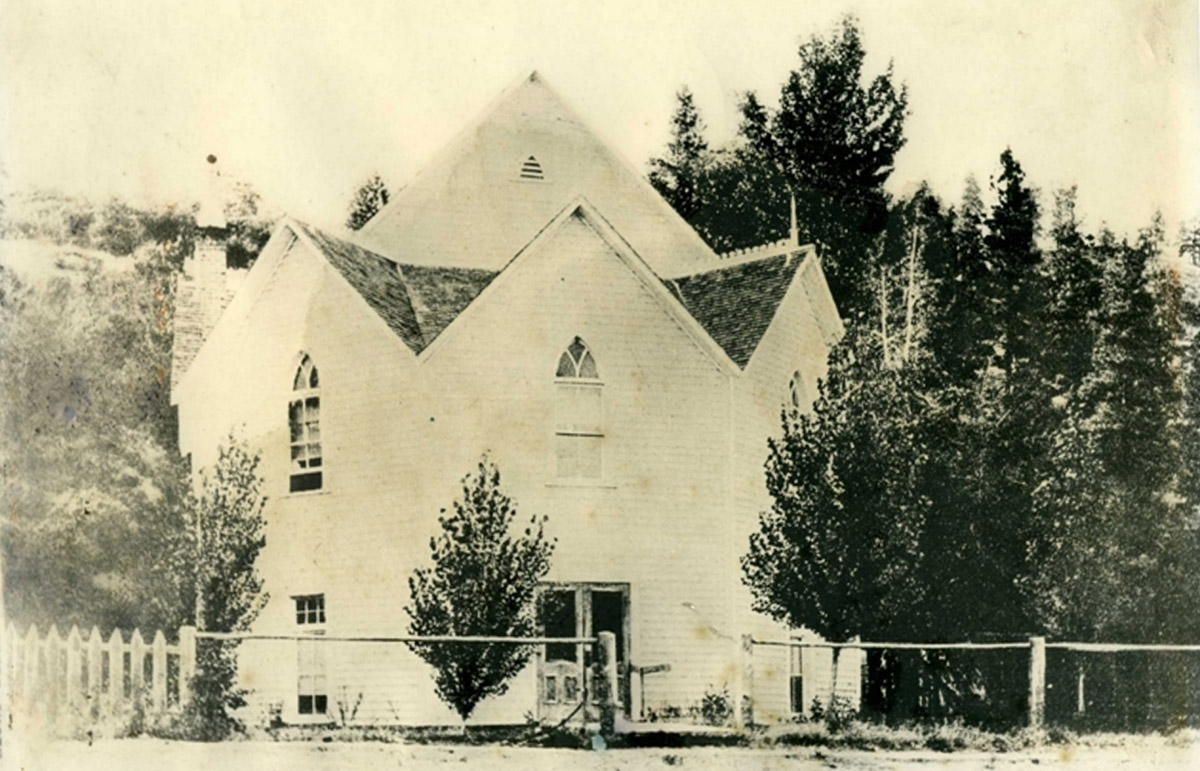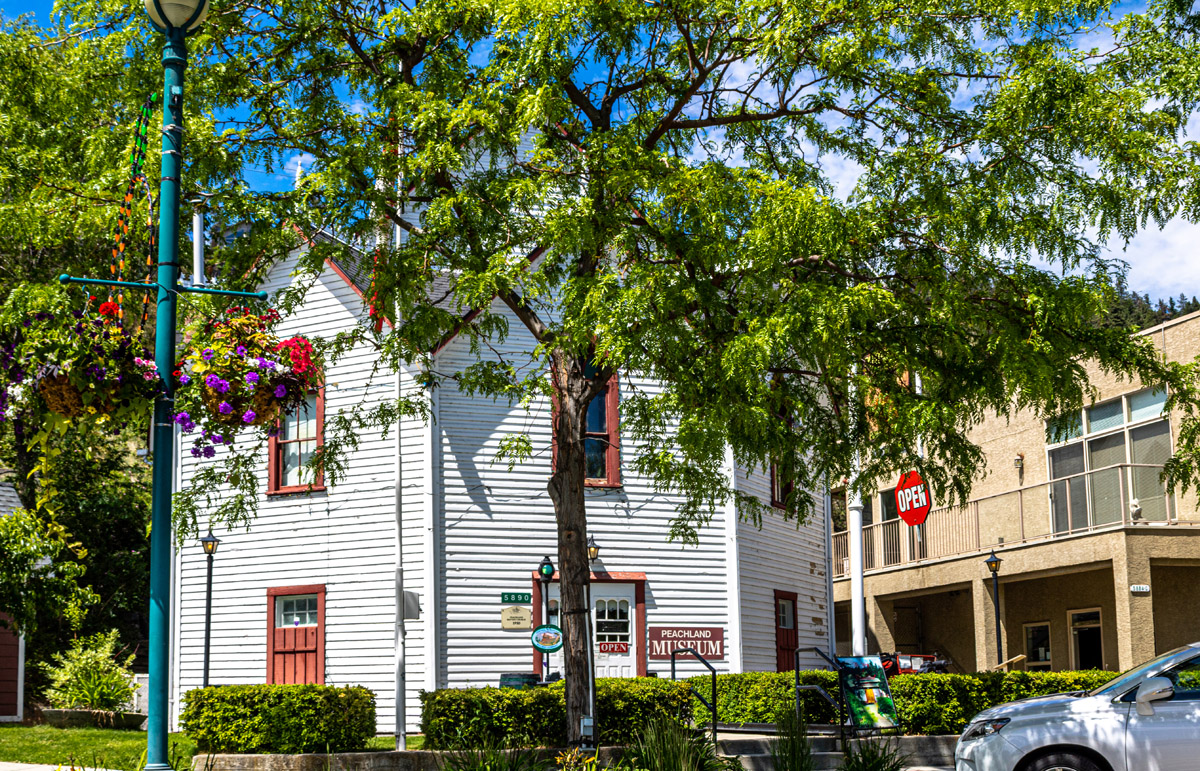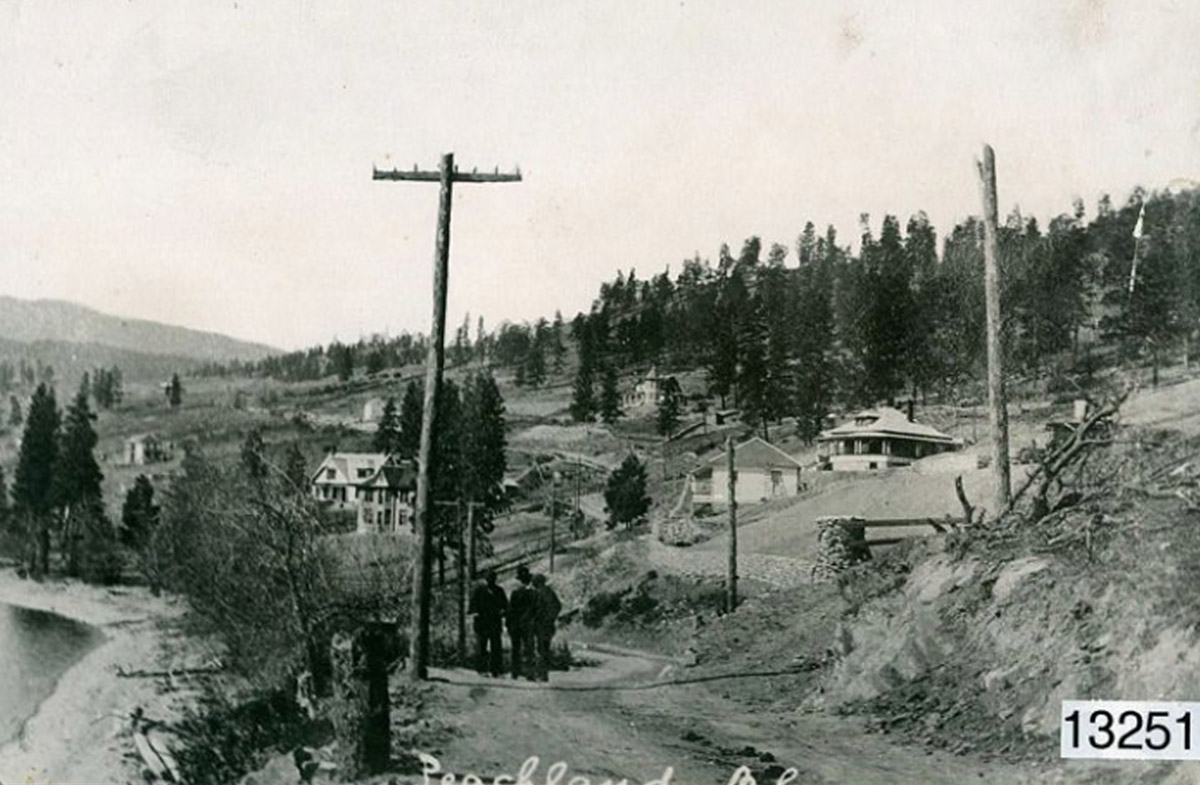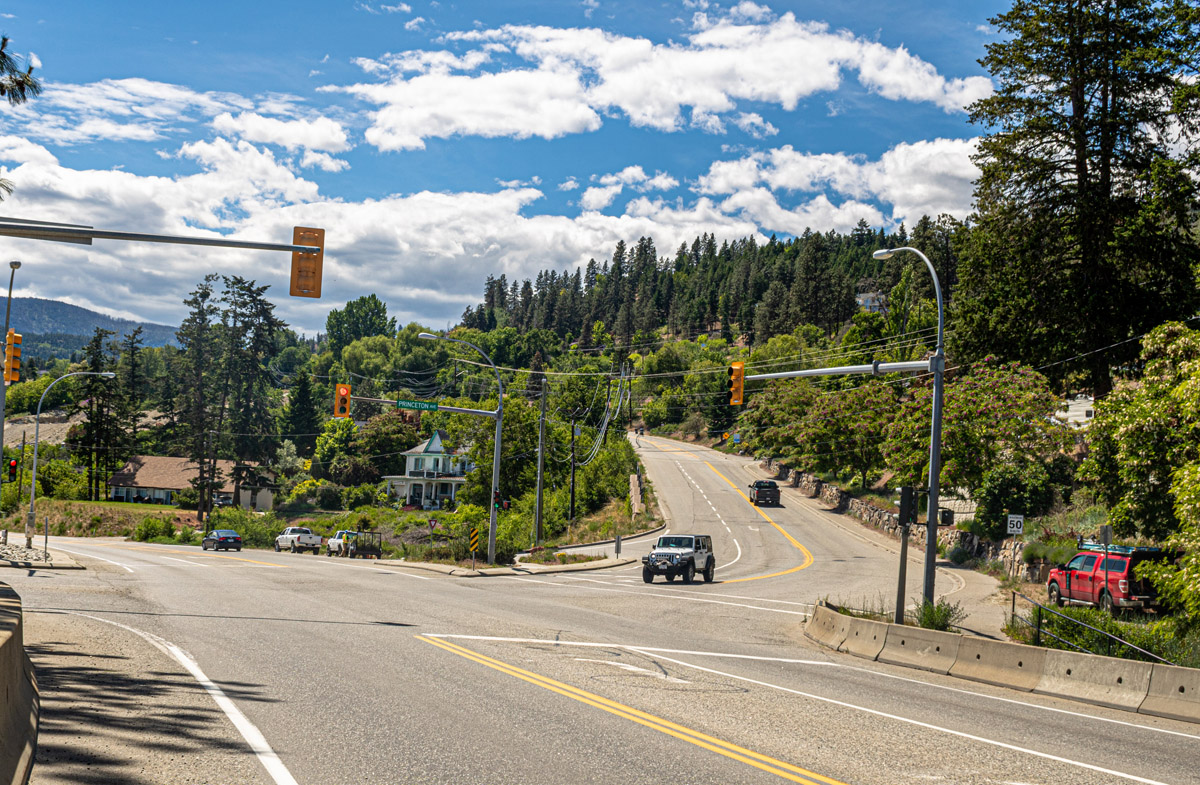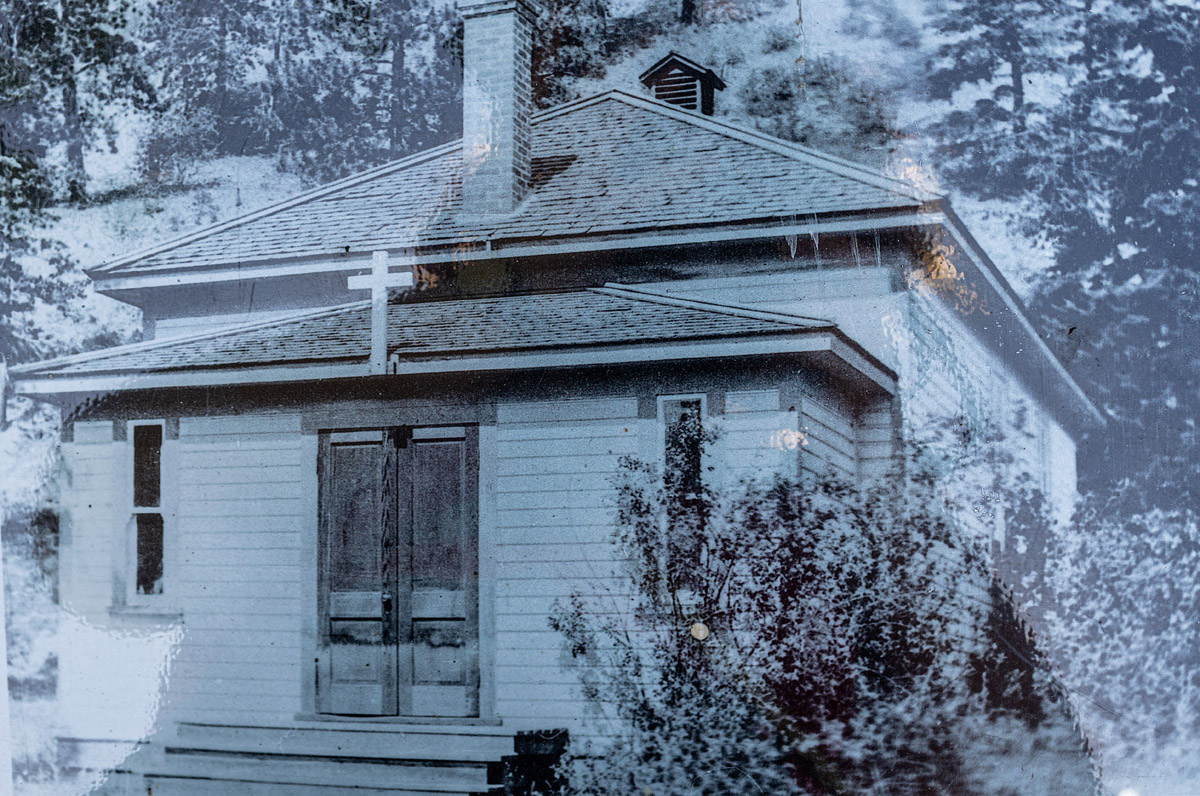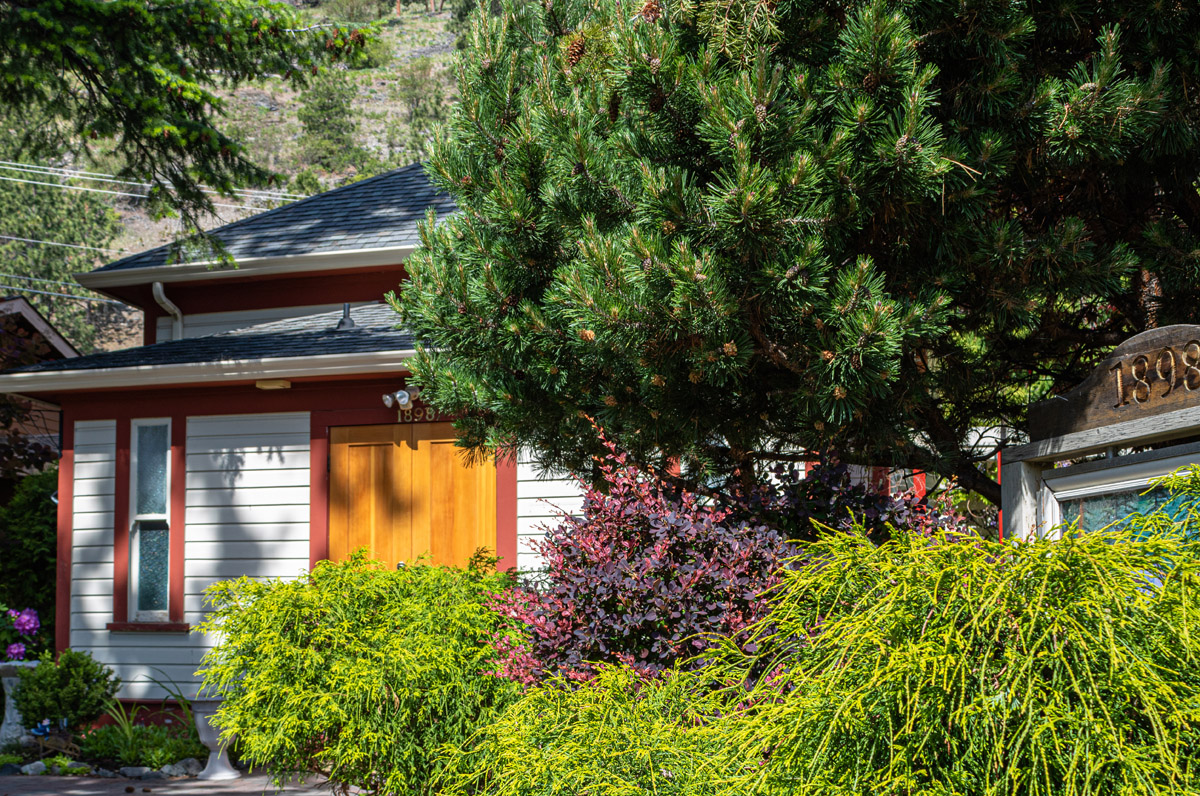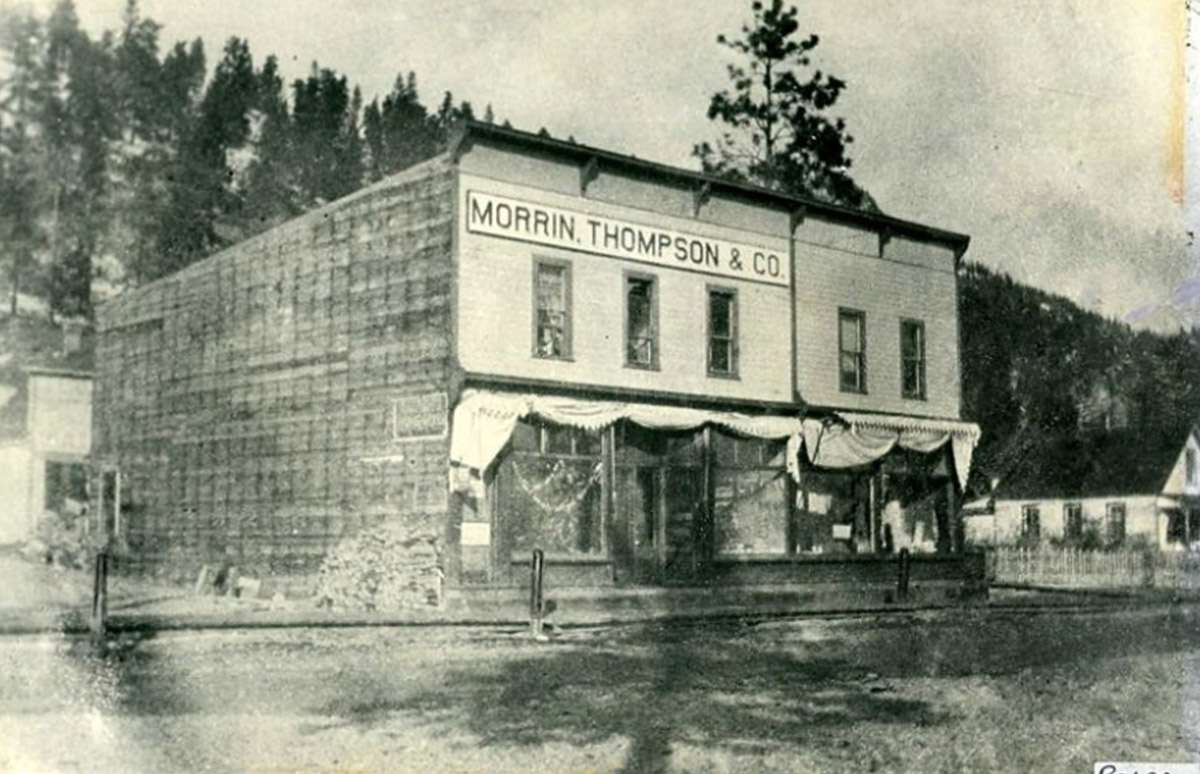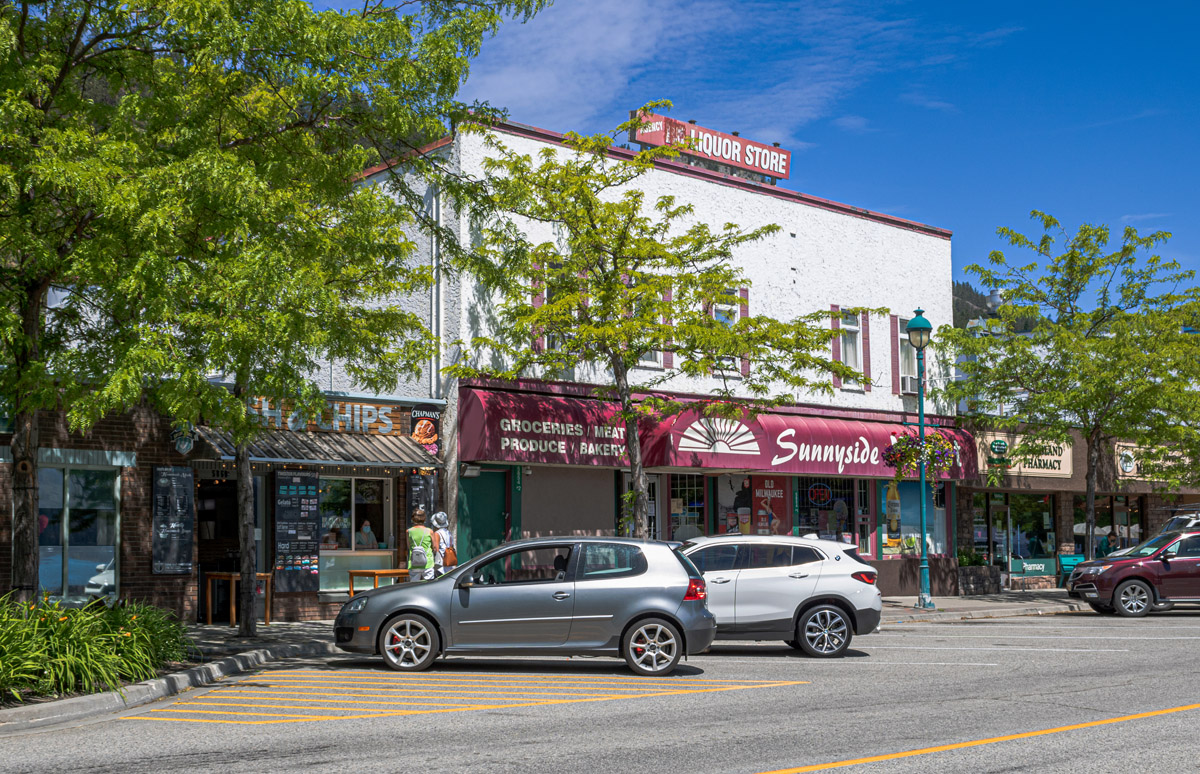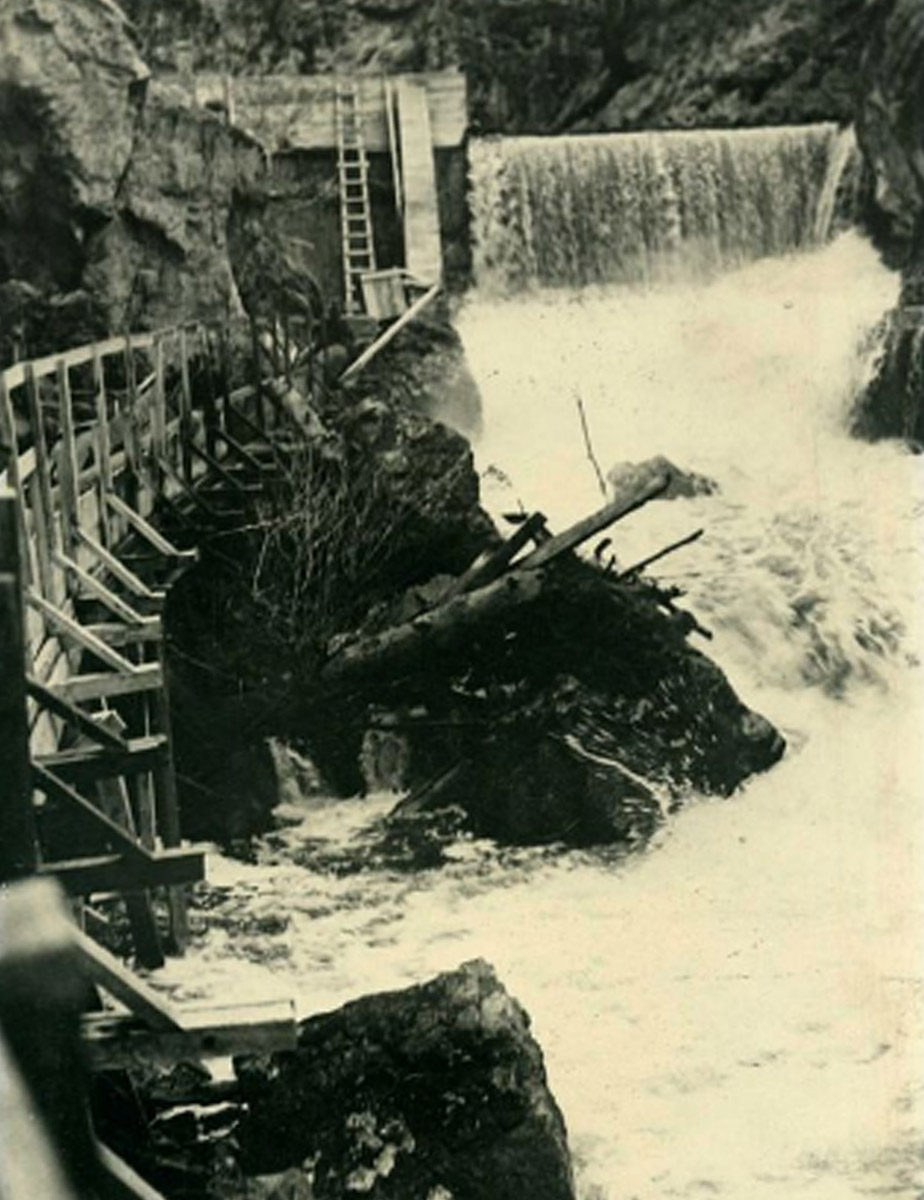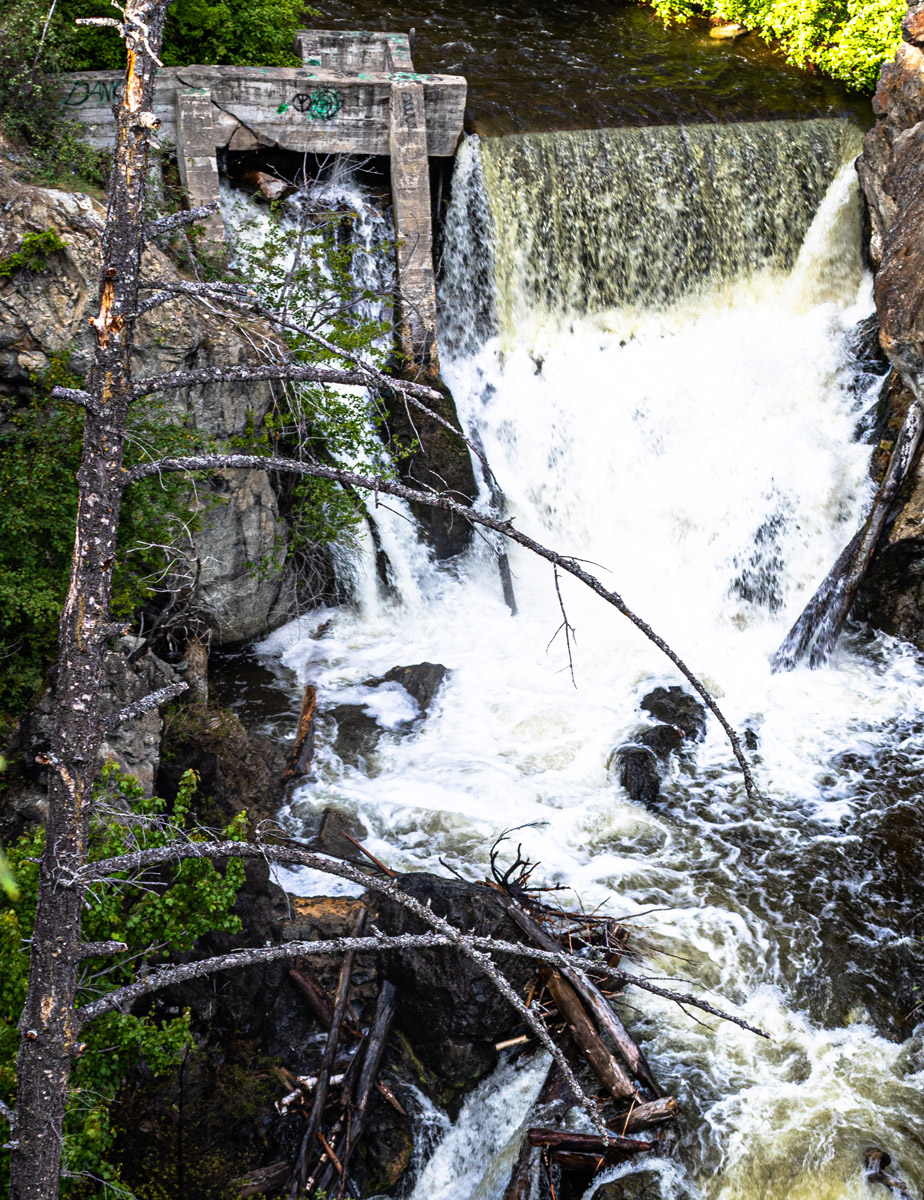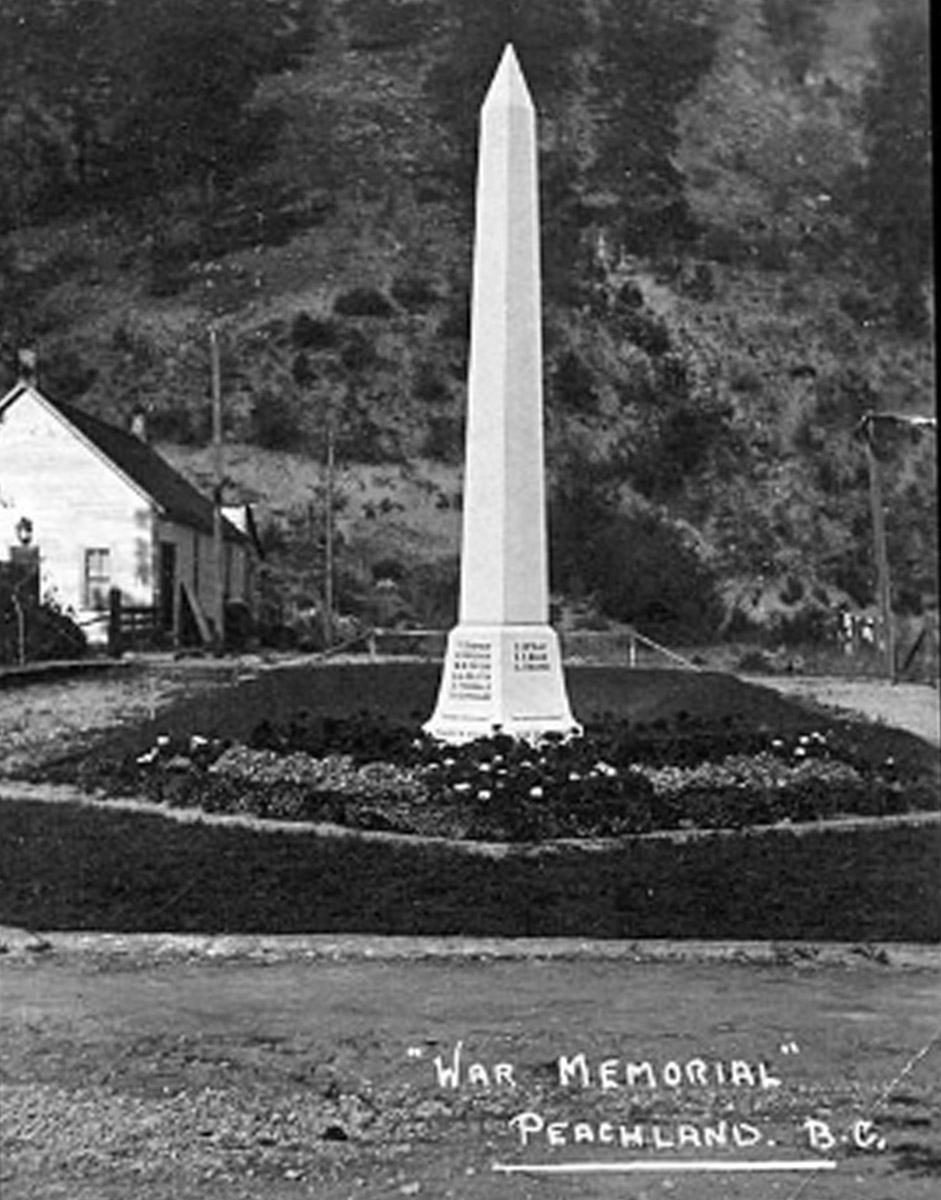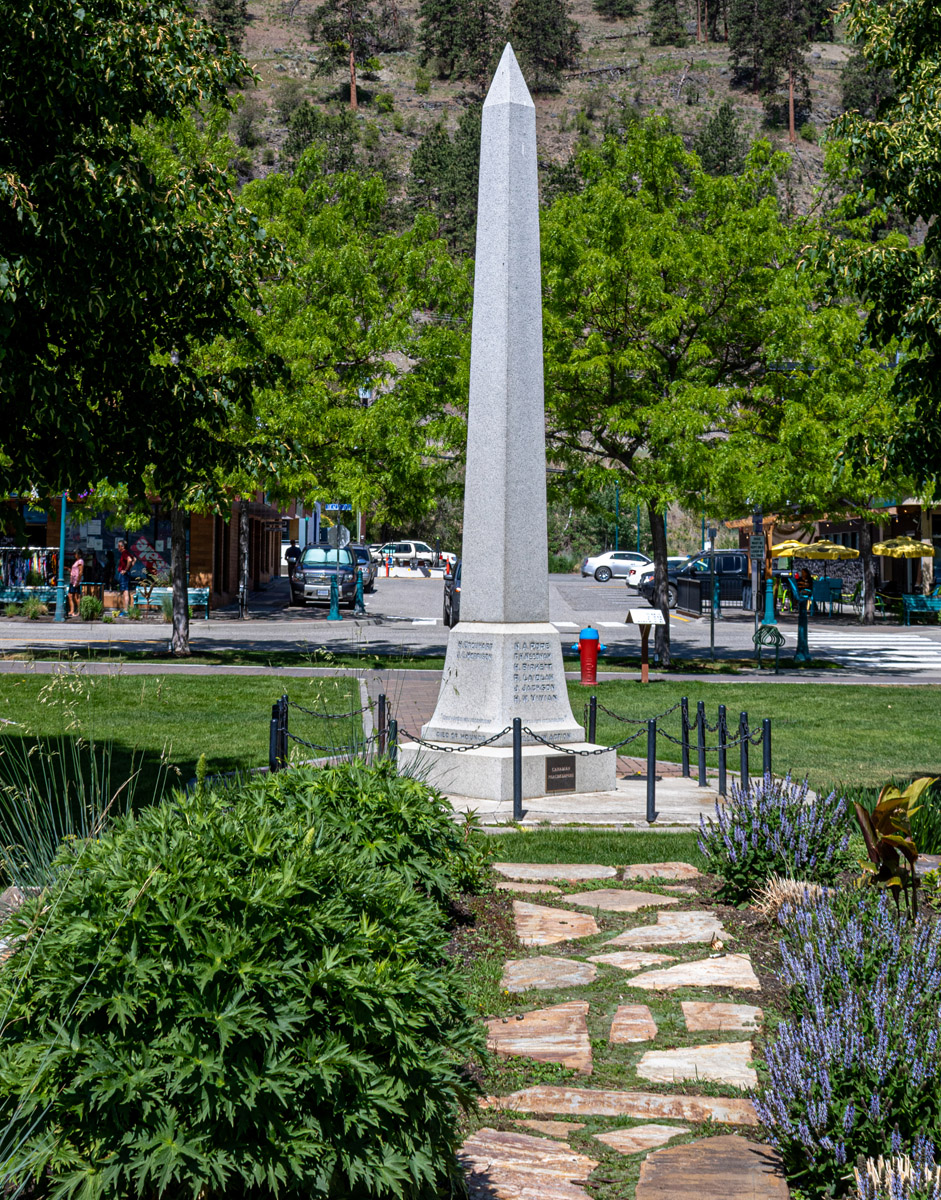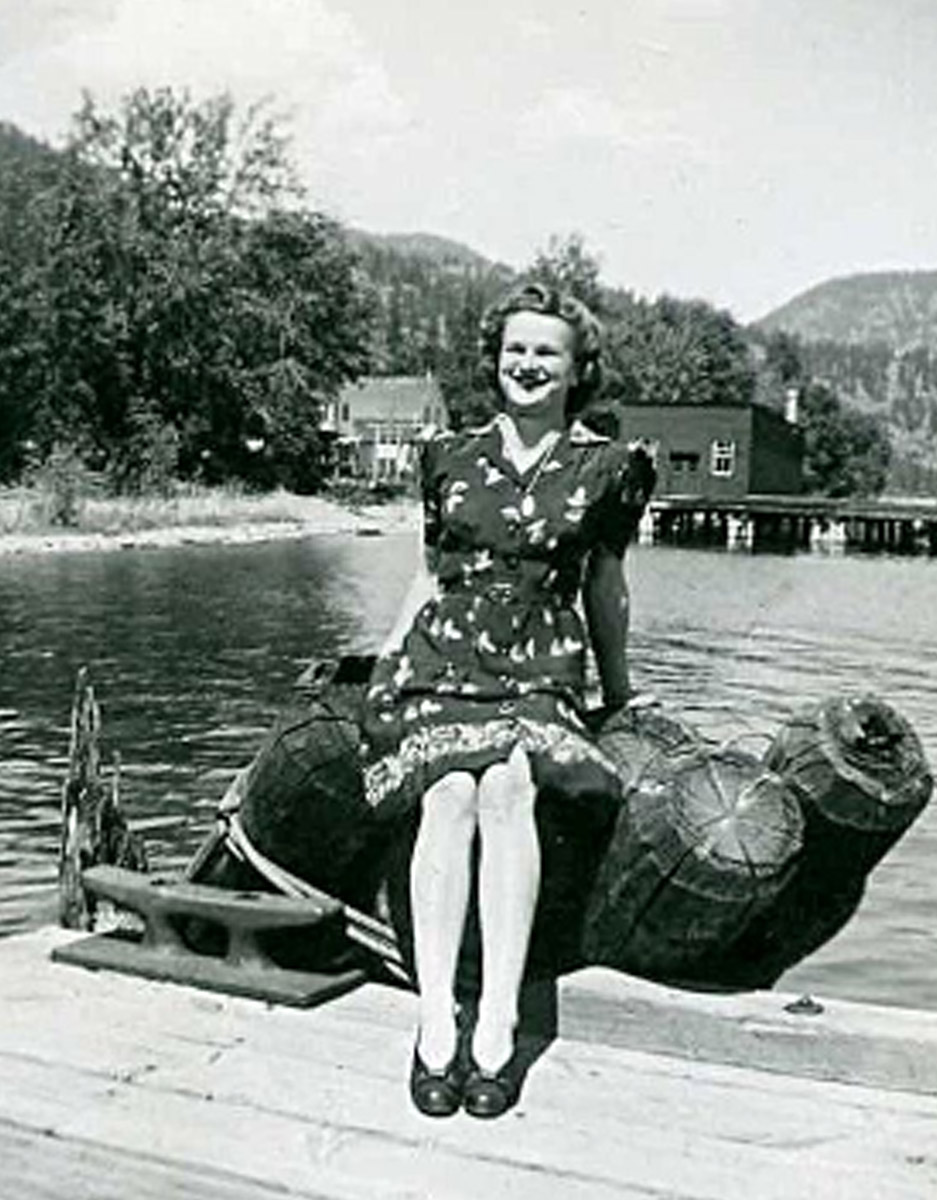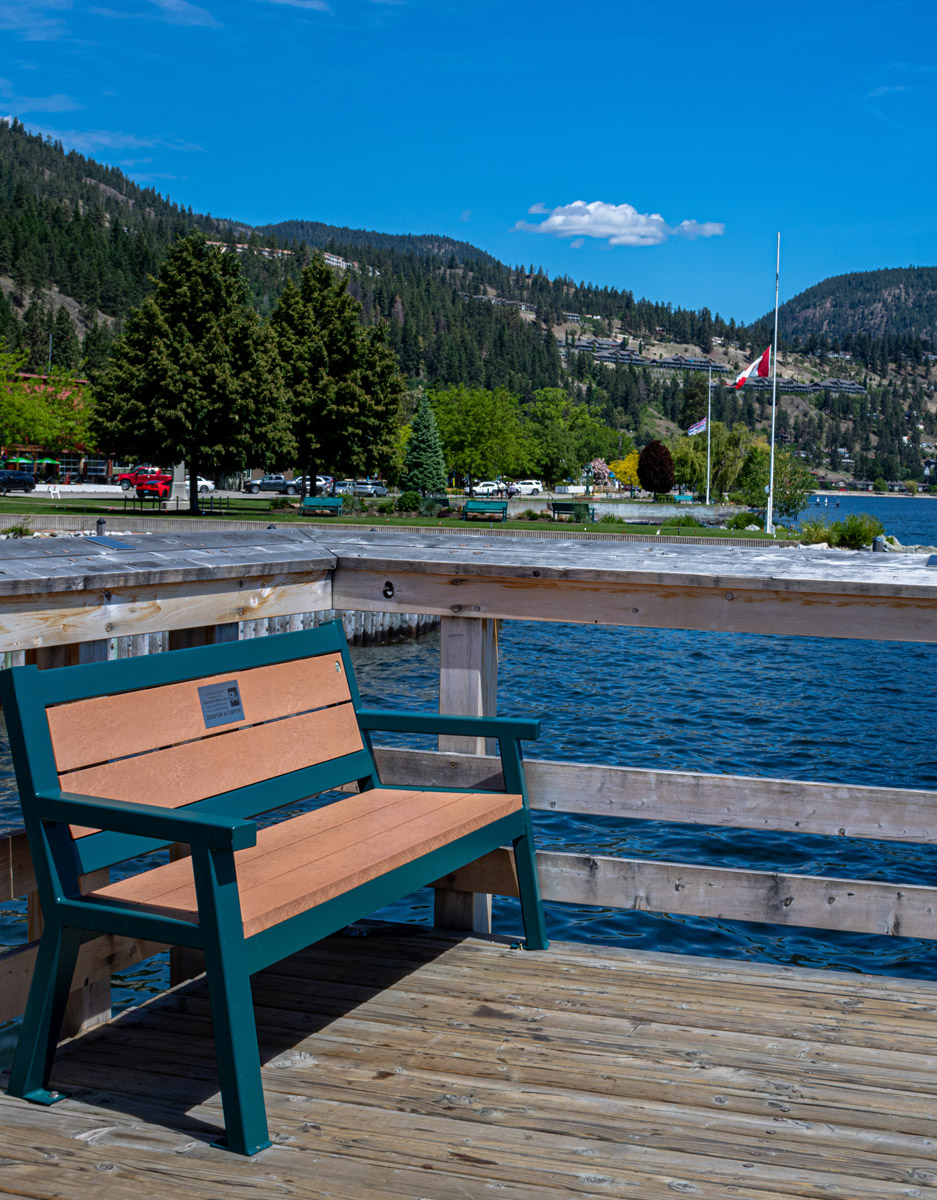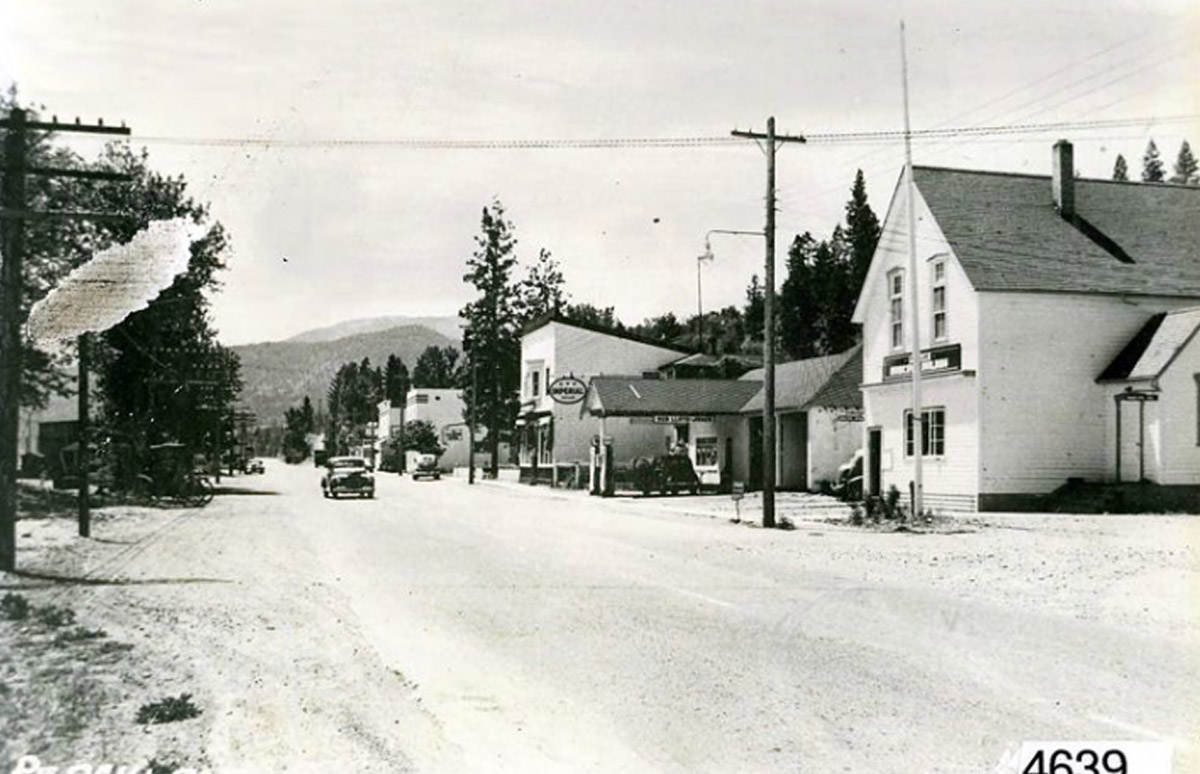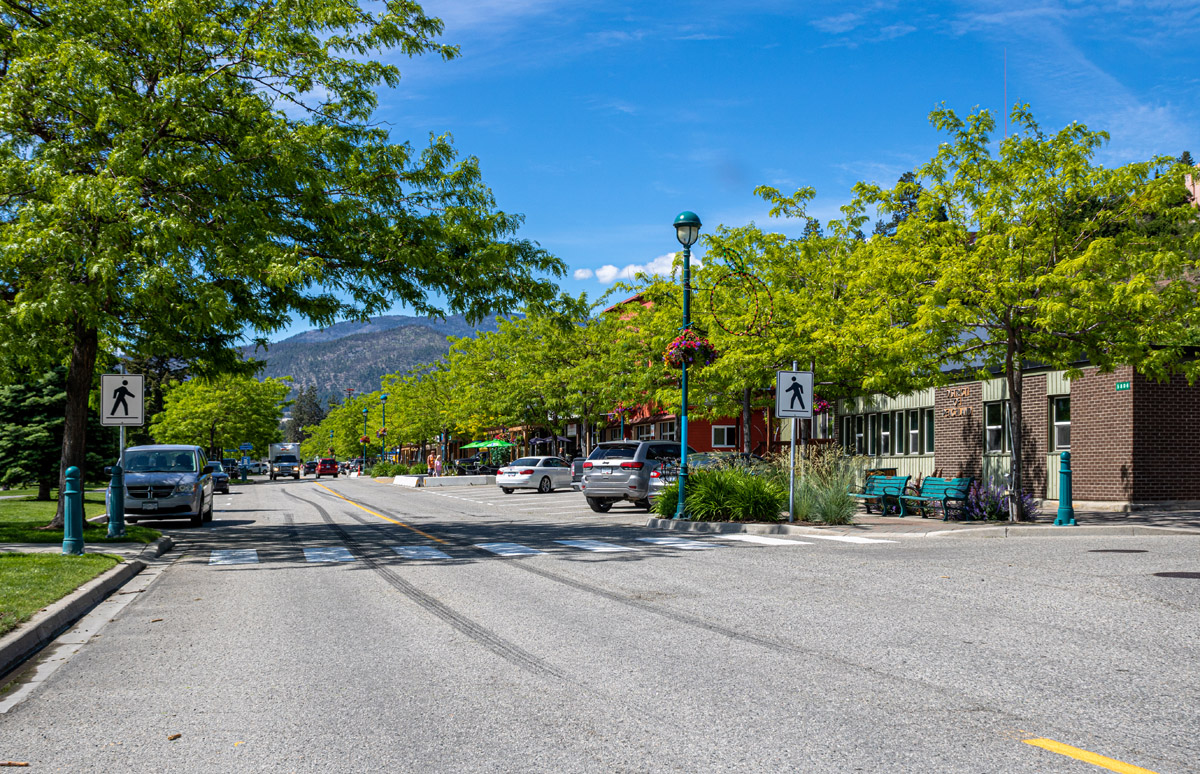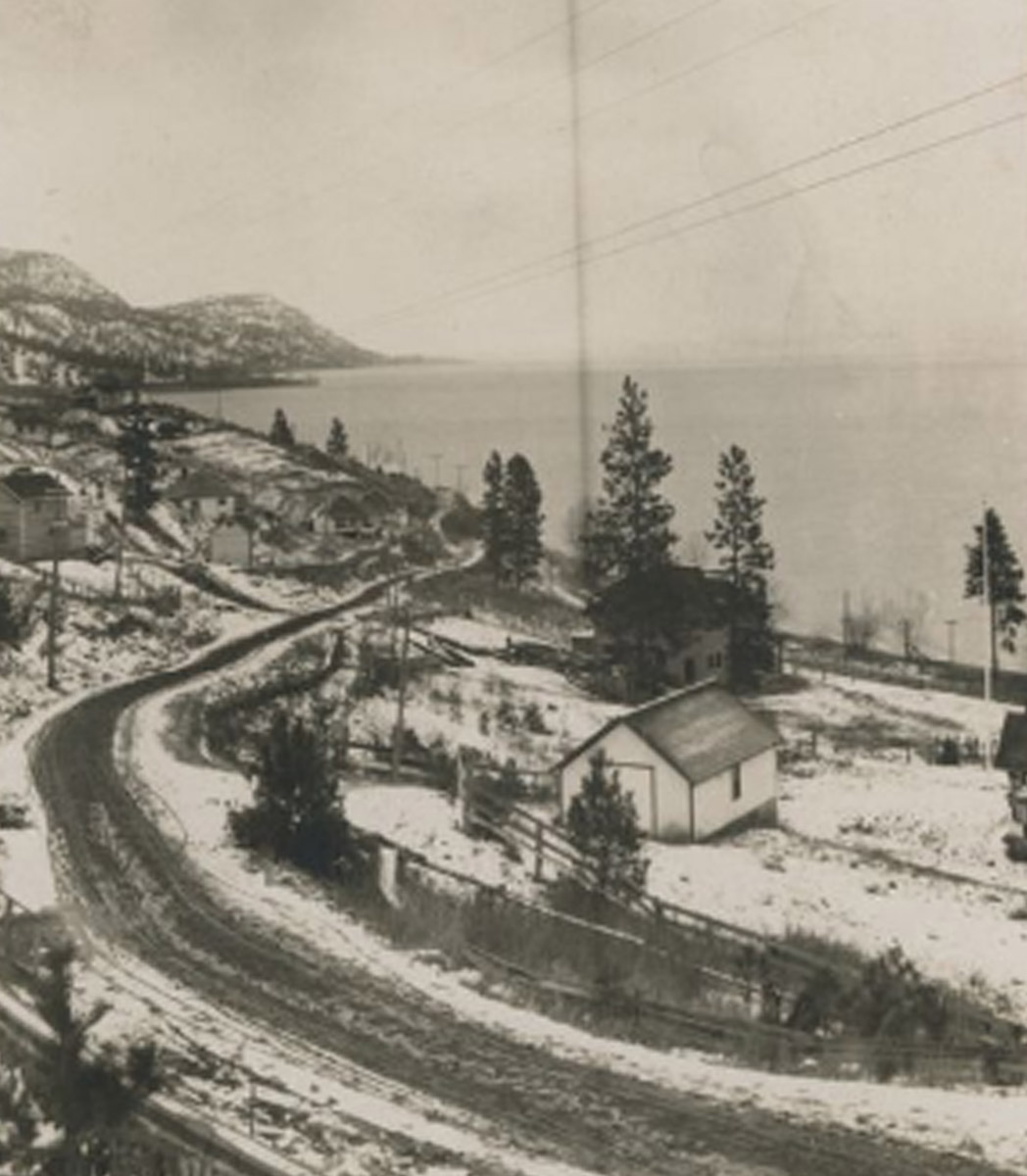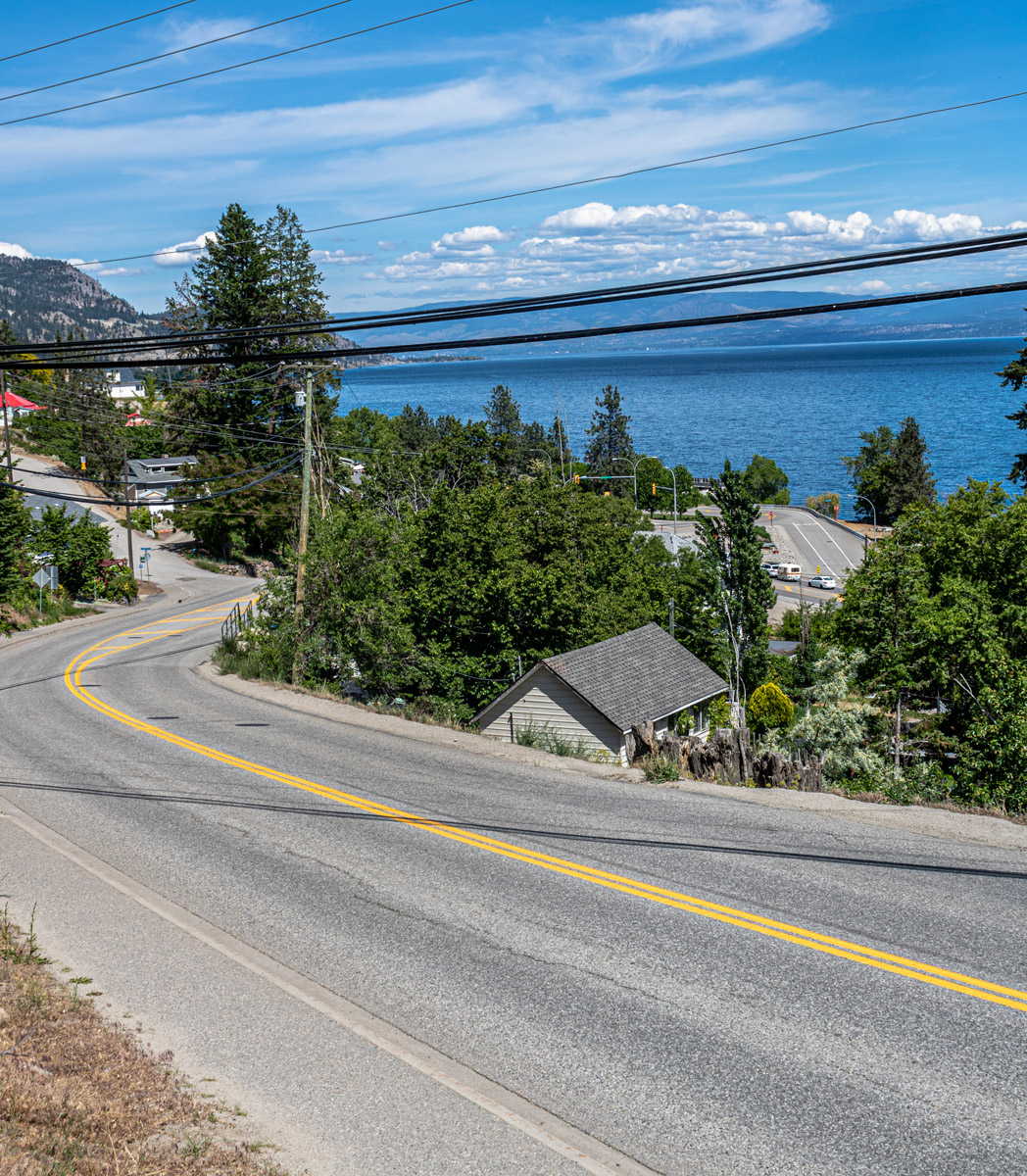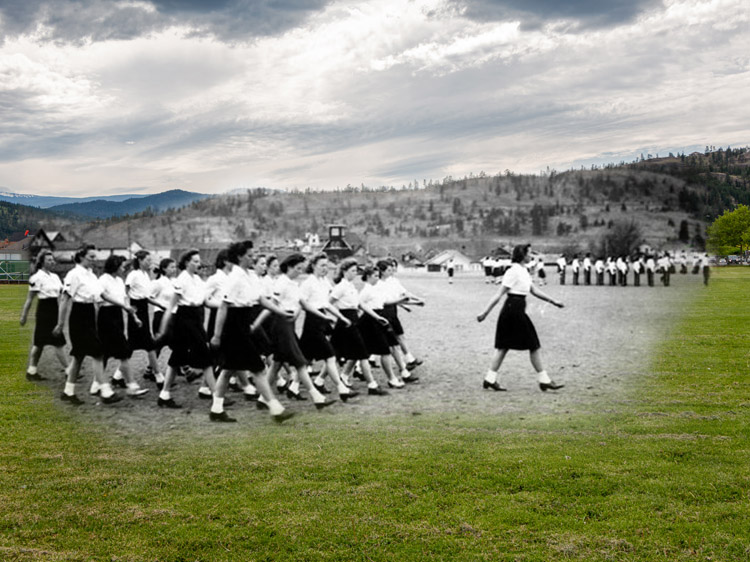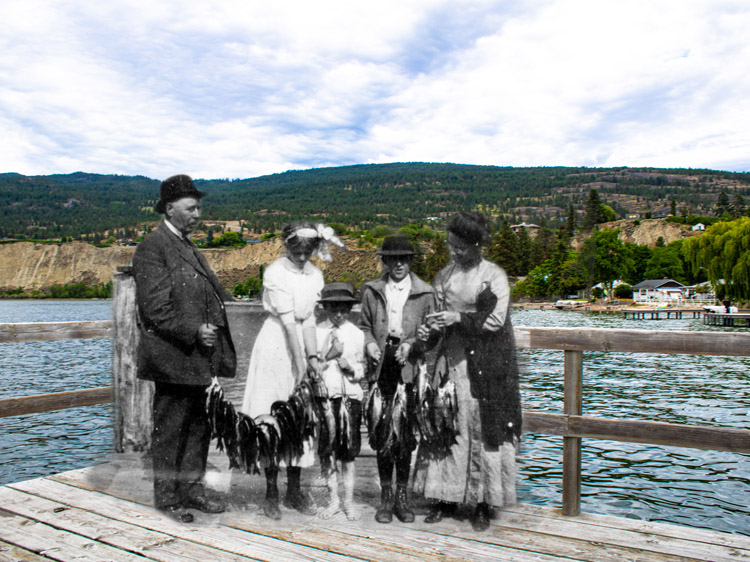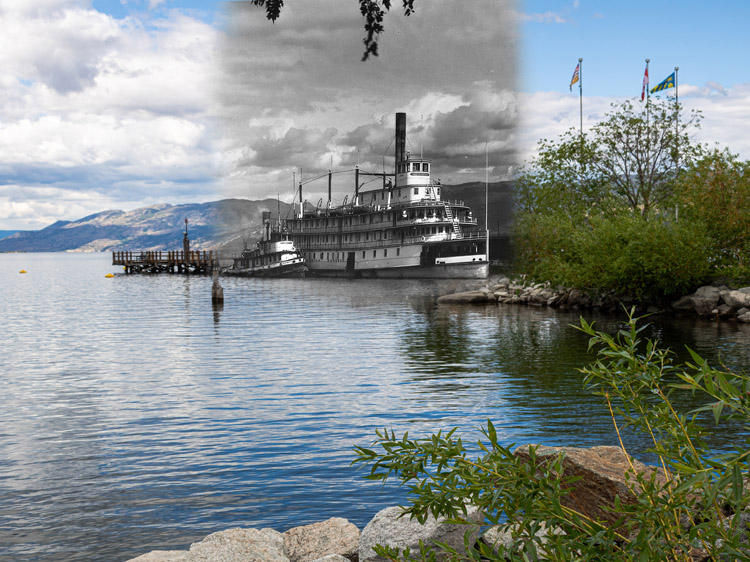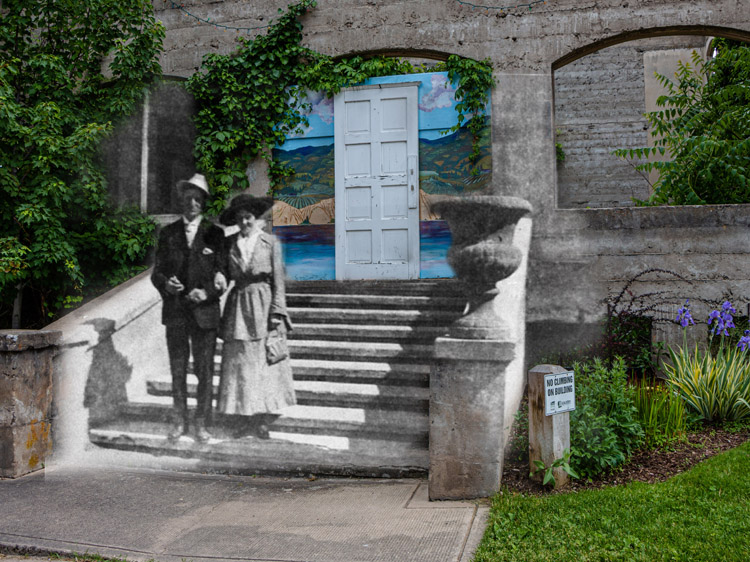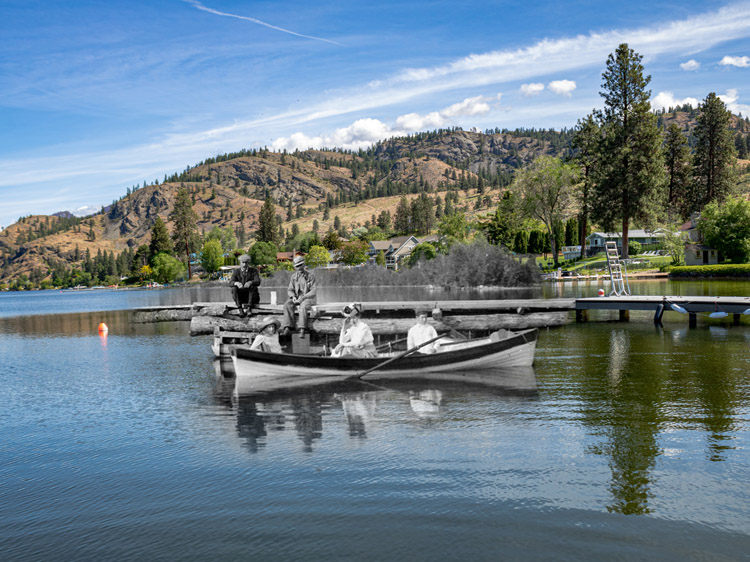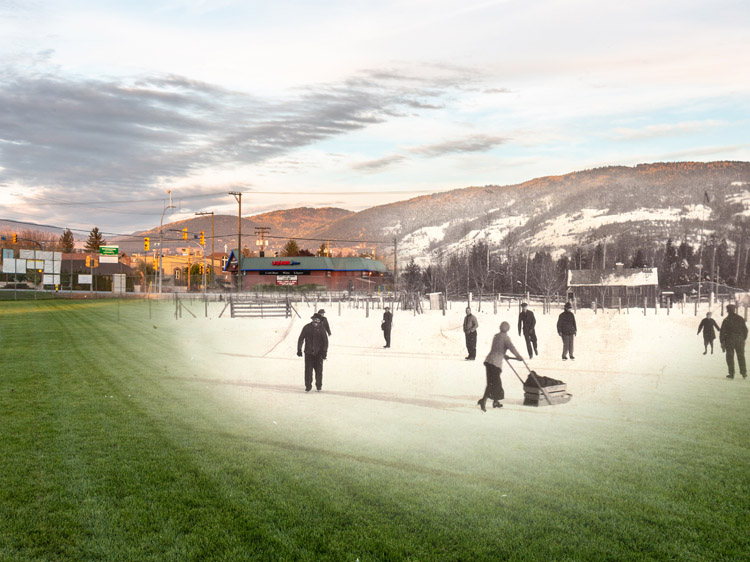For thousands of years, this area has been the home to the Syilx People of the Okanagan Nation, who lived sustainably off the land and developed complex trading networks through the region and beyond. The first Europeans who came to the area of Peachland were fur traders travelling on the fur brigade trail, which passed through where the town is now situated. Peachland itself first got its start in 1889 when prospector J.M. Robinson came to the area and visited the Lambly ranch beside Trepanier Creek. There, he tasted the home-grown peaches and fell in love. Robinson purchased and subdivided the land for the townsite and orchard lots and named the new community "Peachland". From then on, the growth of the settlement was slow and steady as more and more farmers and orchardists moved to the area. Today, the economy of the community has shifted slightly from fruit growing and logging to tourism and local services.
This project was made possible through a partnership with Visit South Okanagan, with support from the Peachland Museum and Peachland's Tourism and Economic Development Committee.
We respectfully acknowledge that Peachland is within the ancestral, traditional, and unceded territory of the Syilx People of the Okanagan Nation.
Explore
Peachland
Stories
The Peachland Baptist Church
Story Location
Turning off the highway into downtown Peachland, you are greeted with the sight of the community's most unique historic building. This 8-sided two-storey building was built in 1910 and used as the Baptist Church until 1964. The church was built by Baptist volunteers who wanted a distinctive presence in the community, but the exact reason for its unusual shape is unknown.
* * *
In the church's early years, the building lacked plumbing and running water. It was heated by large wood burning heaters on first and second floors, in addition to the wood-burning cookstove in the kitchen. Unfortunately these stoves were unable to heat the space as well as the congregation would have liked, and in the winter they shivered throughout services. Heat control was an ongoing issue in the summer as well as the building roasted in the Okanagan sun. Children attending bible school in the summer recalled suffering through the preacher's long lessons, which often went overtime, while trying to pay attention despite the oppressive heat.
The building's architecture, while distinctive, created an unfortunate issue for funerals. Caskets containing deceased congregants had to be carried up the steep stairs to the second floor by struggling pallbearers. Due to the steep angle required to maneuver the casket up the stairs, the assembled congregation often heard a dull thud as the body slid to the bottom of the casket. One can only imagine the effect this must have had on the mourners.
By the mid 1960s, the building's life as a church came to an end, and the Peachland Municipal Offices moved in temporarily while they waited for the construction of a new municipal hall at 5806 Beach Avenue. While this situation was temporary, it did leave an important legacy. The women working in the offices refused to work in a building lacking adequate indoor plumbing and running water and a toilet was installed for their use.
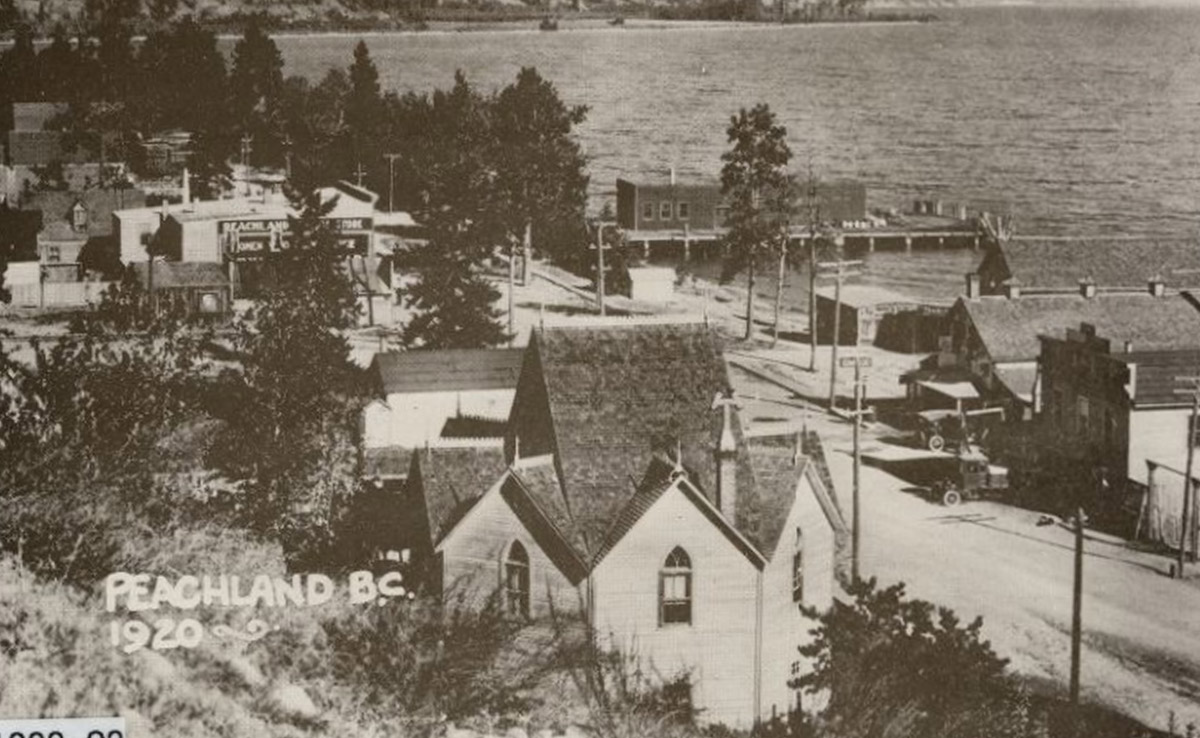
In 1966, the Parks and Recreation Commission took a turn in the building, using it for small gatherings and fitness classes. By this time, a small oil space heater had replaced the old wood burning stoves, but this heater also produced insufficient heat for the building in the winter and the occupants remained uncomfortably chilly.
Six years later, tenancy switched again and for the next eight years, the Peachland Volunteer Fire Brigade used the building as a meeting and training facility. The heating issue was finally resolved with the installation of a wall furnace, much to the relief of the firefighters. In 1979, a fire broke out at the Walter's Limited packinghouse, and the firefighters were able to use the old church across the street to rest and thaw out their frozen gear. In 1980, the firehall gained a second floor which could meet their needs for gatherings and training, and the firefighters moved out. They did not leave without a souvenir of their time at the church however, and the furnace accompanied them to the firehall's new addition. After the firefighters came the community library, followed shortly after by the Peachland Historical Society. Mayor George Waldo opened the Peachland Museum on the top floor with a collection of small donated items collected by the historical society. Eventually the museum took over the bottom floor as well.
Today, the Peachland Museum boasts a large collection of the things one would usually expect in a museum, such as photographs, archives and artefacts. However, that is not the only attraction at the Peachland Museum. A local model train group, the Central Okanagan Railway Company built a large, fascinating model of the Kettle Valley Railway system. Visitors can start the train by pushing a button, and watch as the train weaves around a lovingly rendered model that wraps around the entire second floor.
2021 marks the 40th anniversary of the building's status as an official British Columbia Heritage Site.
The "Little Schoolhouse"
Story Location
One of the most important things for a young community to consider is the education of its children. For Peachland, this need was met while the community was still in its infancy in 1898, when the population numbered less than 100 people. Prior to the construction of this one-room schoolhouse two homes had been used as temporary classrooms. Today, this little building is the oldest building in Peachland that still stands. The one room schoolhouse served the community well for a decade, then it became clear that the burgeoning community would need a bigger building, so the Peachland School was built at the corner of Beach Avenue and 6th, where the Peachland School stands today.
* * *
In The Chronicles of Peachland, early resident Olive B. Clarke remembers how central the little school was to the community, "In the earliest days, the little one-roomed school (white, not red) was really the centre of our lives. It sat in the middle of a gravel bed and everywhere one looked there was gravel, gravel, gravel. We held church services and Sunday School in that little building, saw our first Christmas tree, and took part in the Christmas concerts where I gave my first 'recitation.' After the concert, Santa arrived and gave each of us a net bag filled with candy, mixed nuts and an orange, and we were completely happy!"1
Clarke also writes about a sweet memory surrounding the school's first teacher, C. G Elliot. "In 1906-07 after the Orange Hall was built, Miss Emily Kennedy taught some junior classes there. Mr. Elliot often asked one of us to take a note to her. Little did we realize we were cupid's little helpers, because the next year they were married and lived there many years before moving to Edmonton where both taught for some years."2
When the new four-room school was built in 1908, the Anglican Parish purchased the Little Schoolhouse and St. Margaret's Anglican Church held its first service the day after Boxing Day. It was consecrated three years later and served the congregation until 1995, when it was transferred to the District of Peachland in return for a portion of Brandon Lane.
After a century in the community, volunteers began work to restore the old building. In 2001, the Peachland Little Schoolhouse Society was formed and one of the first priorities was to raise the building and install a proper foundation. The building also had its electrical rewiring redone, and the front door was relocated to its original location in the centre of the building. The gravel described by Clarke was a thing of the past, but they continued to beautify the lot with new landscaping around the building, creating the lovely garden space that now surrounds the school. Today, the building is used as a venue for small gatherings and displays.
The Peachland School at Beach Avenue now functions as the community's visitor centre and art gallery. The community is especially proud of its maternal bat colony that resides in the attic of the building. Every year, mother bats spend the spring and summer in the building where they raise their pups. The people of Peachland are exceptionally grateful for these bats and their role in managing mosquitoes. If you are lucky enough to pass by the building near dusk, you may catch these unique mammals taking flight for their nightly mosquito hunts.
2. Ibid, 29.
Then and Now Photos
The Morrin, Thompson & Co Store
1908
This building was originally built as the Morrin, Thompson and Company Store. It later became the Fulks' General Store, Bob's Market, and Sunnyside Market, the latter of which it remains today. In this photograph from 1908, the hitching posts for customers' horses are clearly visible.
The Trepanier Dam
1909
A small dam, pictured here, was built on Trepanier Creek in 1909 to provide power to the community of Peachland. The dam was in operation until 1947, and was accompanied by wooden flumes that carried water to Peachland's farms and residents. Today, the dam sits at the end of a hiking trail which travels along the top of the canyon.
Peachland's Cenotaph
1935
This cenotaph currently stands in Cenotaph Park, but was originally erected in the centre of 2nd Street. It honours those who fell in the First and Second World Wars and the Korean War. The building in the background of this photograph was the Orange Hall, which later became the Legion.
On the CNR Wharf
1945
The woman posing in this photo from 1945 is Madeleine Ekins. She is perched on the Canadian National Railway wharf in Peachland.
Beach Avenue and the Municipal Hall
1940s
This photo shows an early Beach Avenue. The municipal hall is the first building to the right and the Clements Grocery store and garage are beside it farther down the street. Note the early cars on the road, which has not yet been paved.
Princeton Avenue
1950
This photograph was taken in 1950, looking north down Princeton Avenue towards the lake. The rather steep road is still unpaved.

